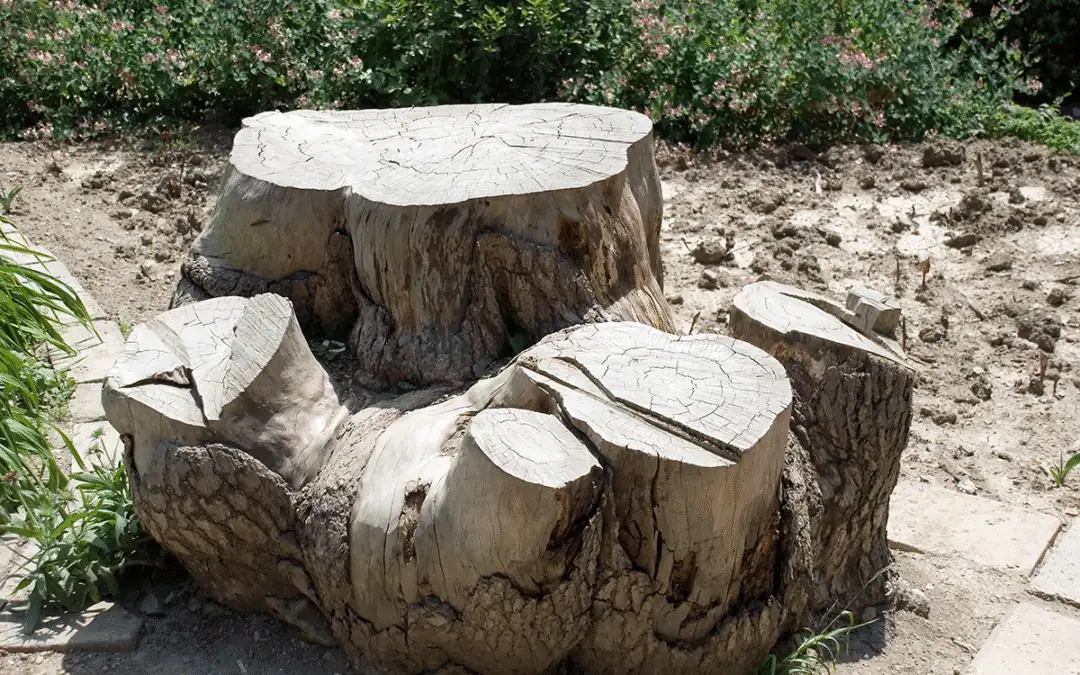When faced with the aftermath of tree removal, property owners often grapple with the decision of how to deal with the remaining stump. Stump grinding and stump removal are two distinct methods that serve the same purpose but differ significantly in their approach and implications. Stump grinding involves the use of specialised machinery to grind the stump down into small wood chips, effectively reducing its height and allowing for easier integration into the surrounding landscape.
In contrast, stump removal entails the complete extraction of the stump and its root system from the ground, which can be a more invasive and labour-intensive process. The choice between these two methods hinges on various factors, including the desired outcome for the landscape, budget constraints, and the specific characteristics of the site. Stump grinding is often favoured for its efficiency and minimal disruption to the surrounding area, as it leaves the roots in place and requires less excavation.
On the other hand, stump removal is typically chosen when there is a need for complete eradication of the stump and roots, particularly in cases where future planting or construction is planned in that area. Understanding these differences is crucial for making an informed decision that aligns with one’s landscaping goals. Stump grinding Surrey is a service offered by professional arborists in the UK.
Stump grinding is a relatively straightforward process that utilises a machine known as a stump grinder. This equipment is equipped with sharp, rotating blades that can effectively chip away at the wood of the stump. The operator positions the grinder over the stump and begins to grind it down, typically starting at the top and working their way downwards.
As the machine operates, it produces wood chips that can be used as mulch or disposed of as desired. The depth to which the stump can be ground varies, but it is common to grind down to approximately 15-30 centimetres below ground level. One of the significant advantages of stump grinding is its speed.
The entire process can often be completed within a few hours, depending on the size of the stump and the complexity of the surrounding area. Additionally, because stump grinding does not involve removing the root system, it minimises soil disturbance and reduces the risk of damaging nearby plants or structures. After grinding, property owners are left with a pile of wood chips that can be repurposed or removed, allowing for a relatively clean finish to the job.
The Process: How Stump Removal Works
Stump removal is a more comprehensive procedure that involves extracting not only the visible portion of the stump but also its extensive root system. This process typically begins with an assessment of the stump’s size and root structure, as these factors will influence the method used for removal. In many cases, heavy machinery such as excavators or backhoes may be employed to dig around the stump and uproot it entirely from the ground.
This method can be particularly effective for larger stumps with deep-root systems. Once the stump has been excavated, it is essential to fill in the resulting hole to restore the landscape’s integrity. This often involves backfilling with soil and compacting it to prevent settling over time.
The removal process can be labour-intensive and time-consuming, especially if there are numerous roots that need to be extracted or if the stump is located in a confined space. Furthermore, this method may lead to significant soil disruption, which can affect nearby plants and landscaping features.
When considering stump grinding versus stump removal, cost is often a primary concern for homeowners. Generally speaking, stump grinding tends to be more cost-effective than stump removal due to its less intensive nature. The average cost of stump grinding can range from £50 to £300 per stump, depending on factors such as size and accessibility.
In contrast, stump removal can be significantly more expensive, often ranging from £100 to £500 or more, particularly for larger stumps or those with extensive root systems. The disparity in costs can be attributed to several factors inherent in each process. Stump grinding requires less labour and equipment compared to stump removal, which necessitates more extensive excavation work and potentially additional machinery.
Moreover, since stump grinding leaves behind some of the root system, it reduces the amount of soil that needs to be replaced after removal. Homeowners should also consider any additional costs associated with landscaping or replanting after either process, as these can vary widely based on individual circumstances.
The impact on landscape aesthetics and functionality is another critical consideration when choosing between stump grinding and stump removal. Stump grinding typically leaves behind a level surface covered with wood chips, which can blend into the surrounding area if managed properly. This method allows for quicker replanting or landscaping options since it does not disturb the soil structure significantly.
However, some homeowners may find that wood chips do not provide an ideal visual appeal or may require additional landscaping efforts to create a seamless transition. In contrast, stump removal results in a completely cleared area where the stump once stood, allowing for greater flexibility in future landscaping projects. This method provides an opportunity for new planting or construction without concerns about residual roots affecting growth or stability.
However, it can leave behind a noticeable hole that requires filling and may necessitate additional landscaping work to restore visual appeal. Ultimately, the choice between these two methods will depend on individual preferences regarding aesthetics and future landscaping plans.
Time efficiency is a significant factor when deciding between stump grinding and stump removal. Stump grinding is generally quicker; most jobs can be completed within a few hours, making it an attractive option for those looking for immediate results. The process involves minimal setup time and can often be performed without extensive preparation of the surrounding area.
This efficiency makes it particularly appealing for homeowners who wish to quickly reclaim their outdoor space. Conversely, stump removal is a more labour-intensive process that can take considerably longer to complete. Depending on the size of the stump and its root system, removal may require several hours or even days to finish properly.
The need for excavation equipment adds to both time and labour costs, as operators must carefully navigate around existing landscaping features to avoid damage. Homeowners should weigh their time constraints against their desired outcomes when considering which method best suits their needs.
Environmental impact is an increasingly important consideration in landscaping decisions today. Stump grinding is often viewed as a more environmentally friendly option since it leaves much of the root system intact, allowing for natural decomposition over time. This process contributes organic matter back into the soil, enriching it and promoting healthy growth for surrounding plants.
Additionally, using wood chips generated from grinding as mulch can help retain moisture in the soil and suppress weed growth. On the other hand, stump removal can have more immediate environmental consequences due to soil disruption and potential damage to nearby vegetation. The excavation process may disturb beneficial microorganisms in the soil and disrupt established root systems of adjacent plants.
Furthermore, if not managed properly, removed stumps can lead to erosion or other issues in areas prone to heavy rainfall or runoff. Homeowners should consider these environmental implications when deciding which method aligns best with their ecological values.
Making the Decision: Which Is Right for Your Landscape?
Ultimately, choosing between stump grinding and stump removal requires careful consideration of various factors unique to each property owner’s situation. For those seeking a quick solution with minimal disruption to their landscape, stump grinding may be the ideal choice. It offers an efficient way to eliminate unsightly stumps while preserving much of the surrounding environment.
Conversely, if future landscaping plans involve new plantings or construction in the area where a tree once stood, complete stump removal may be necessary despite its higher cost and labour requirements. Homeowners should also take into account their long-term goals for their outdoor space, including aesthetic preferences and environmental considerations. In conclusion, understanding the nuances between stump grinding and stump removal empowers property owners to make informed decisions that align with their landscaping objectives while considering budgetary constraints and environmental impacts.
When deciding between stump grinding and stump removal for your landscape, it is important to consider the benefits of each option. Stump grinding involves using a machine to grind the stump into small chips, which can then be used as mulch or compost. On the other hand, stump removal involves digging out the entire stump and its roots, leaving a hole in the ground. If you are unsure which option is best for your situation, you can visit Grind My Stump’s FAQs page for more information. If you are still unsure about whether to remove that old tree stump, you can read their article on the topic here.

